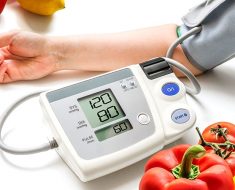A new report from the KLAS Research Arch Collaborative found that rates of nurse and physician burnout have continued to rise amidst the COVID-19 pandemic.
And although electronic health records – a frequently cited contributor to burnout in other studies – certainly made the list of culprits, clinicians also pointed to chaotic workplaces, after-hours workloads and too many bureaucratic tasks as major factors.
“Not only is burnout increasing, but the rate of increase has sharply accelerated in 2021,” observed report authors.
“The rise of the Delta variant is likely a significant factor in this acceleration – from Q2 to Q3 2021 (as the Delta variant was ramping up), Collaborative data shows a sharp rise in the number of clinicians linking their burnout to COVID-19,” they continued.
WHY IT MATTERS
The healthcare industry is facing major staffing shortages, increasing pressure on hiring managers and decision-makers to attract and retain clinicians.
Troublingly, the KLAS report finds that since the start of the pandemic, the percentage of nurses who say they are likely to leave their organization within the next two years has increased.
“This increase is larger than the increase observed for other clinician roles, and it has worsened even in just the last six months, increasing in that time period from about 20% to about 25%,” read the report.
When it comes to contributors to burnout, EHRs or other digital tools hurting efficiency was one of the top factors – but clinicians actually mentioned it less frequently since the start of the pandemic.
Meanwhile, physicians are increasingly likely to point to a chaotic work environment as a cause for burnout, while nurses are now more apt to blame after-hours workloads than they were before COVID-19.
Other factors that have jumped in frequency since the start of the pandemic are lack of teamwork and no personal workload control. The report also zeroed in on the correlation between contributors and severity of clinician burnout.
“For physicians, there are some specific contributors that are now more indicative that a specific physician is experiencing a higher degree of burnout: after-hours workload, personal control over workload, number of bureaucratic tasks and chaotic workplace,” said report authors.
Here, the issue of EHRs arose again: Since the pandemic began, EHR-related contributors have become less powerful indicators of nurse burnout severity.
“This is not surprising given that nurses have been on the front lines of the pandemic, dealing with chaotic work environments, loss of control over their work conditions, and increased workloads that spill over into their personal time,” wrote report authors.
THE LARGER TREND
In the COVID-19 era, burnout has become an issue across healthcare professions, with nurses pointing to patient volume and emotionally draining shifts and physicians describing huge workloads and bulky administrative tasks.
But patient engagement is also a potential factor. As individuals have grown more comfortable with virtual access to their clinician, they’ve also sought to get in touch more frequently.
Although communication can undoubtedly be positive, it also may be causing physicians to spend more time in their inboxes – again raising burnout concerns.
ON THE RECORD
“All clinician types – including both physicians and nurses –are reporting higher levels of burnout than ever before,” wrote KLAS report authors.
“Prior to the start of the pandemic, the percentage of clinicians reporting some degree of burnout was consistently about 25%,” they said. Now, they continued, “that number has increased to approximately one-third, and a significant portion of that increase can be attributed to COVID-19.”
Kat Jercich is senior editor of Healthcare IT News.
Twitter: @kjercich
Email: [email protected]
Healthcare IT News is a HIMSS Media publication.
Source: Read Full Article





